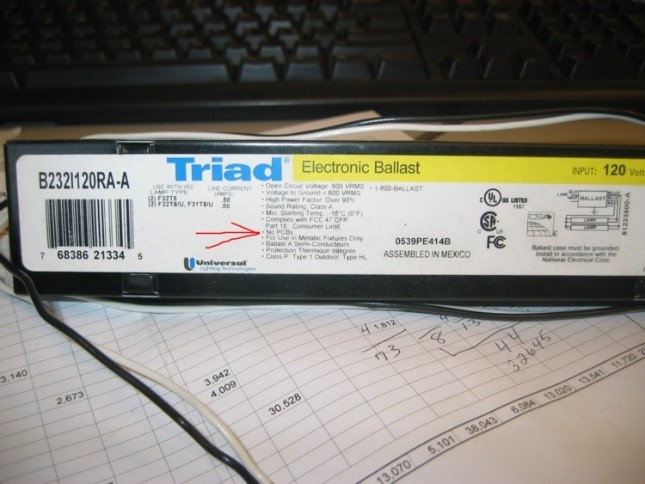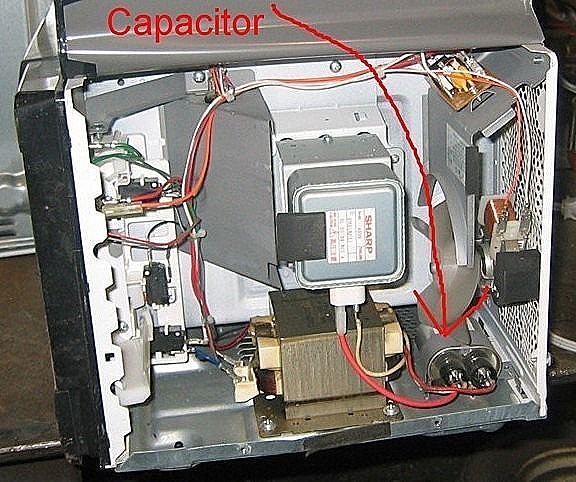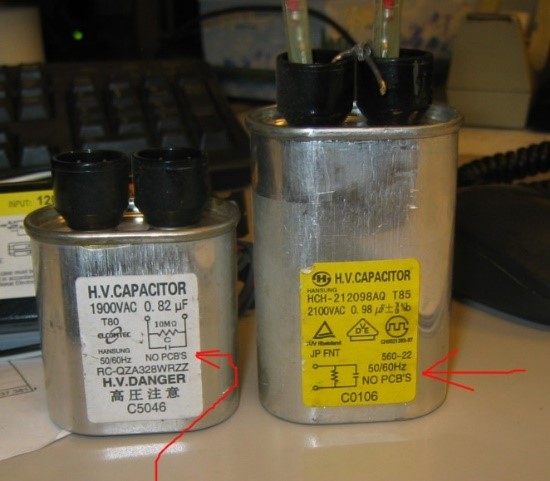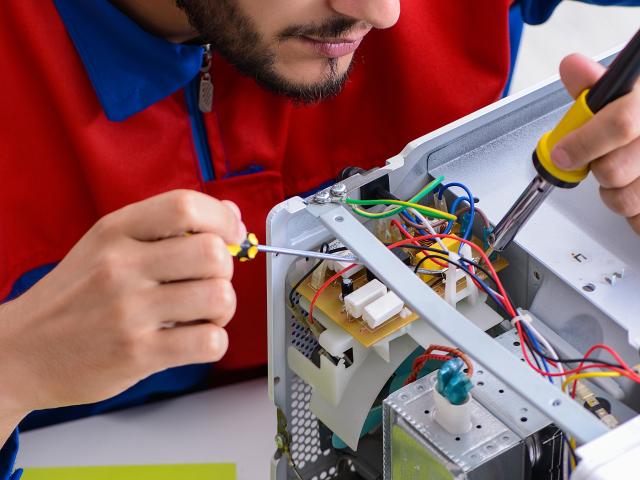Microwave Recycling
Microwaves can be recycled with your electronics OR with your scrap metal.
If you choose to put your microwaves with your scrap metal, CAPACITORS MUST BE REMOVED. According to NRRA's metal vendor, in addition to environmental concerns, capacitors can store energy and are fire hazards in scrap piles and dumpsters. If you choose to put your microwaves with your electronics, capacitors do not have to be removed.
Safe-Handling Microwaves
While our vendor has never heard of a person getting shocked while removing a capacitor, they do have recommendations for safe removal. It is advised that you unplug the unit, and power cycle the unit PRIOR to removing capacitor.
Power Cycle - This is when the Power button, or Quick Start button is pressed a couple times. (Unit does not have to be plugged in to do this). This will draw any remaining power in the system and should mitigate the risk of shock.
Recommended Process to Remove Capacitors:
- Unplug unit and power cycle unit.
- Make sure microwave has been unplugged for at least 1 hour.
- Remove outside cover.
- To assure no charge is existing: with an insulated screwdriver, connect capacitor terminals by touching both together at the same time (short) and remove capacitor.
- Mark three (3) sides of the microwave with a large X (inside a circle) using a brightly colored paint (fluorescent orange recommended).
Disposal of Capacitors
If capacitors are marked "NO PCBs"
Can be disposed of in MSW
Can include with electronics
DO NOT PLACE IN SCRAP METAL.
If capacitors are NOT marked "NO PCBs,"
- Considered hazardous waste (could contain beryllia) and need to placed in a marked bucket.
- Can be disposed of with your electronics, with fluorescent bulbs or at your Household Hazardous Waste Collection Day.
- DO NOT PLACE IN SCRAP METAL.

(Pictures are examples of capacitors marked "NO PCBs")
*Information Sheets Disclaimer: The information provided on this website is intended for general informational purposes only. While we strive to keep the information accurate and up to date, we make no representations or warranties of any kind, express or implied, about the completeness, reliability, suitability, or availability of the information. Any reliance you place on such information is strictly at your own risk. Any information shared about other businesses, products, or services does not constitute an endorsement or recommendation by NRRA. Users should independently verify the accuracy and reliability of such information before making any decisions.


